Prune Like a Pro

March 27, 2025
Category: Blueberry Blog
Most woody perennial fruit crops, including southern highbush blueberry (SHB), require regular pruning to maintain good plant health and productivity. Pruning and training SHB can be used to accomplish a variety of different goals depending on the plant age, size, and overall health and condition. General benefits of pruning include: maintaining and balancing vegetative and reproductive growth, improving fruit yield and quality, reducing incidence of pests and disease, improving overall plant shape and structure, controlling plant size, facilitating practices such as spraying and harvesting, and reducing limb breakage, just to name a few.
Young Plants
Often 1/3 to ½ of the top of young SHB plants may be removed at planting to minimize transplant stress and facilitate plant establishment. The amount of pruning will depend on the condition of the plants. Tall, leggy, or rootbound plants may require more pruning at planting than smaller plants. Historically, flower buds have been removed at planting, and some flower bud thinning may be practiced the following year, depending on the level of growth and establishment that occurred in the year of planting. However, with intensive management, some of the more vigorous cultivars have produced fruit within 12 to 18 months of planting. The degree of flower bud removal on young plants will depend on cultivar, management, and plant establishment. After plant establishment, little pruning or training is needed on young plants with the exception of training plants to develop a narrow crown which can facilitate machine harvesting. Plastic sleeves or cartons are often used for this purpose (Photos 1 and 2). After removal of these training aids, regular maintenance pruning will be needed to maintain the narrow crowns (Photo 3). If mechanically harvested plants are not properly trained, fruit loss during harvest can be significant and damage to the canes (potential infection sites for disease) from the catch plates may occur (Photo 4). Even if mechanical harvesting is not anticipated, selective removal of some of the lower, horizontally oriented canes can be done in favor of more upright growth. Upright growth is generally more productive, and this can also help keep fruit from contacting the ground and facilitate air movement throughout the planting.
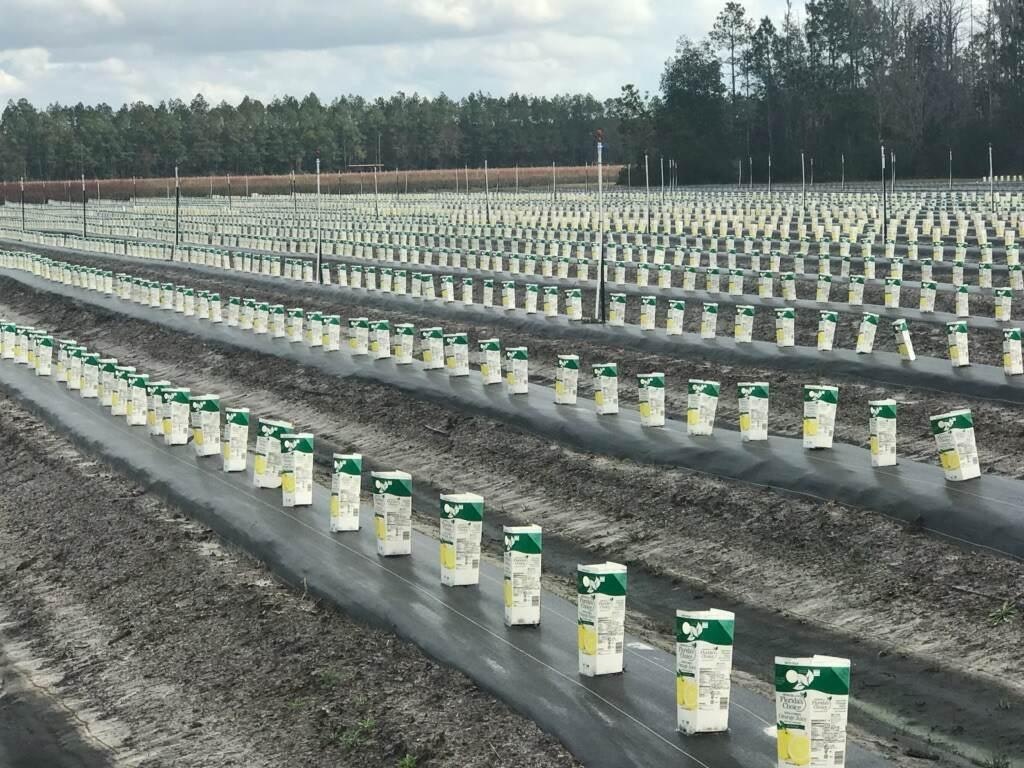
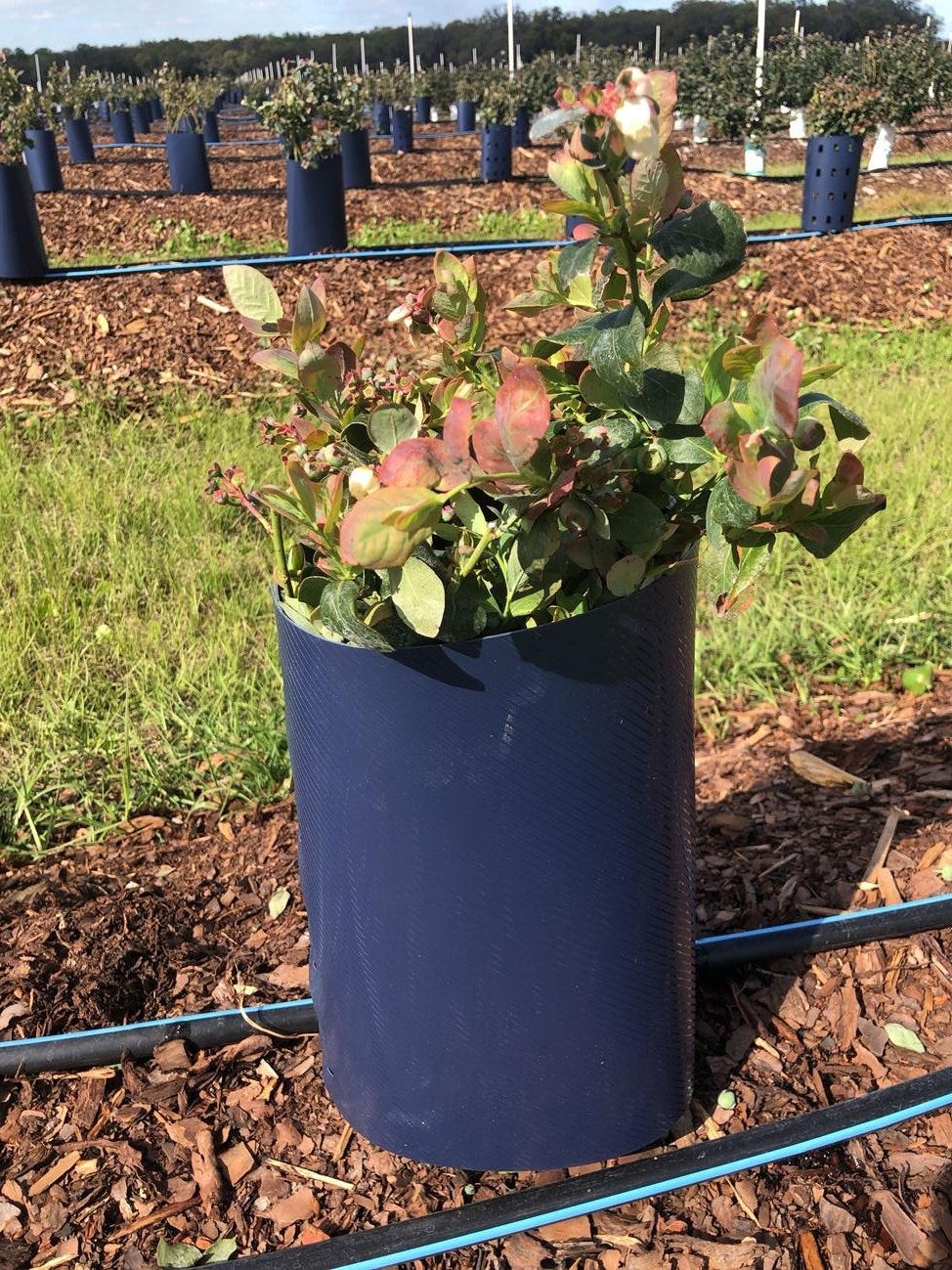
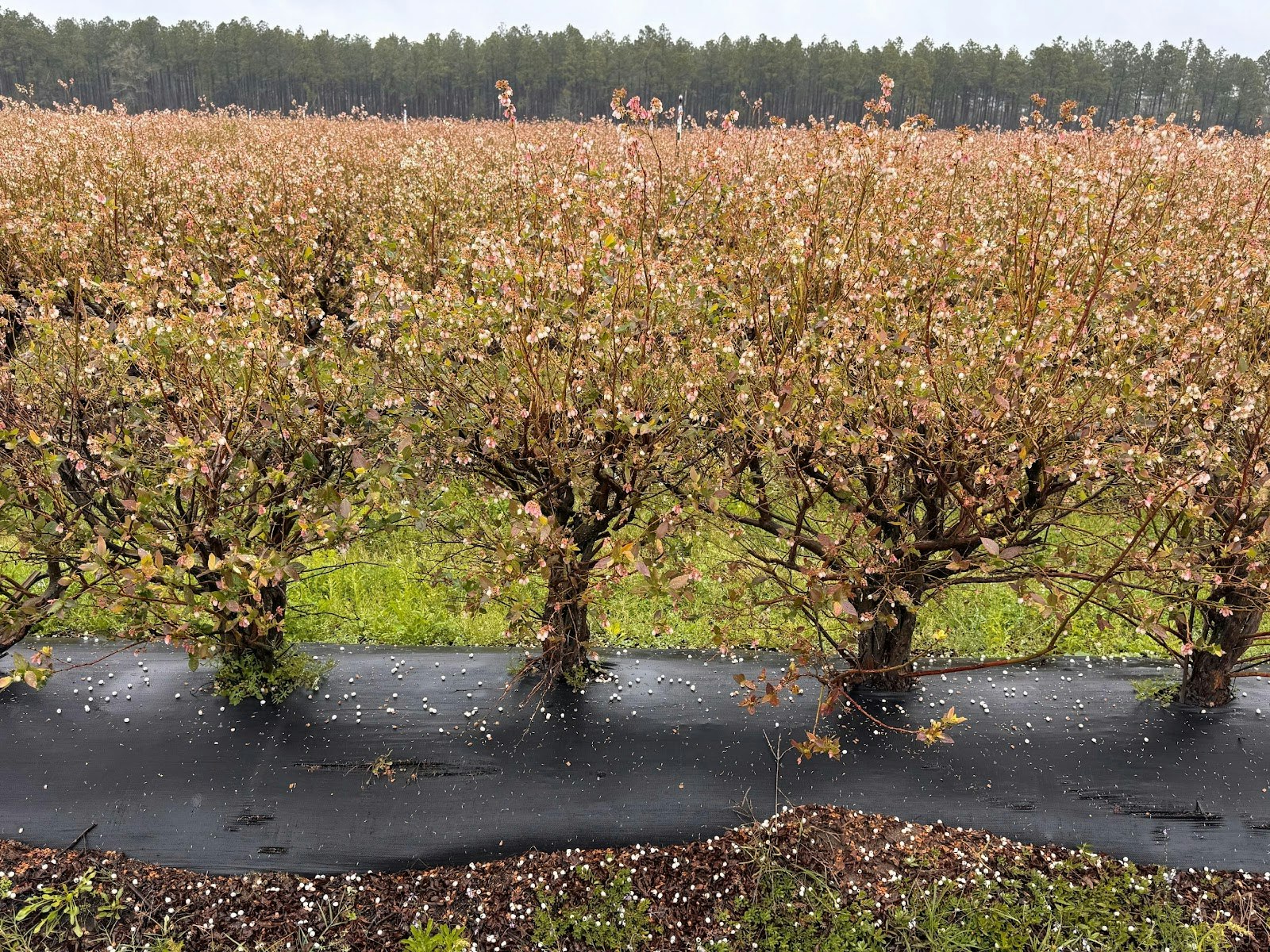
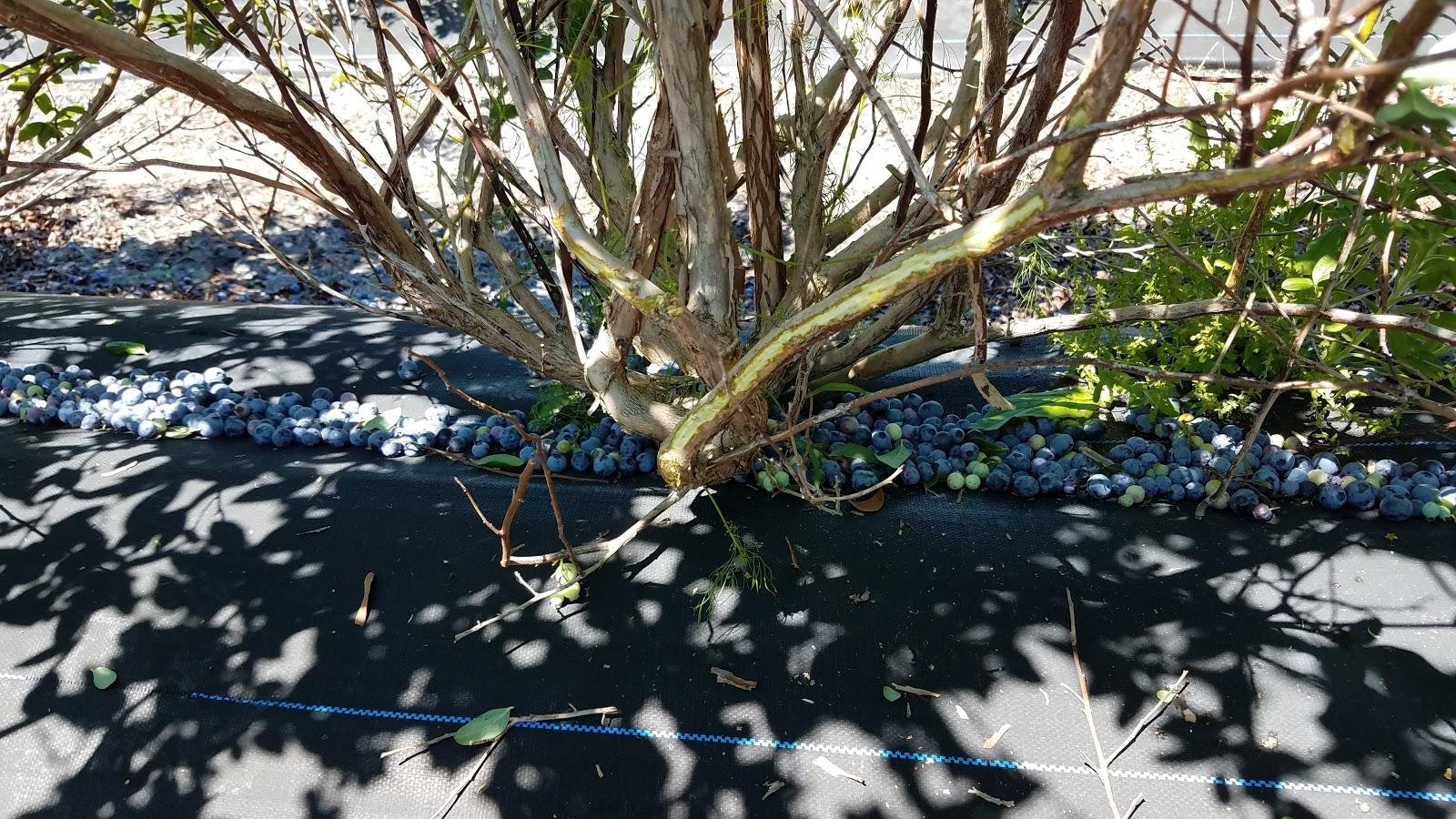
Mature Plants
As plants transition from young to mature, pruning goals and objectives change. Most pruning of mature blueberry plants is done to keep their size manageable for harvesting, spraying, and other orchard practices, and to stimulate strong summer shoot growth which will comprise most of the fruiting wood for next year’s crop. This pruning is usually done by mechanically hedging and topping soon after the completion of harvest.
Mechanical hedgers of various types and configurations are used to reduce plant height and trim the sides of plants to prevent growth into the row middles (Photos 5 and 6). Smaller farms may use handheld gas-powered trimmers. Topping height of mature southern highbush plants varies but is often between 40 and 48 inches which facilitates fruit harvest. While some growers hedge straight across the top of the plant, others prefer a "rooftop" angled cut at about 45–55 degrees up to a point in the center of the plant canopy. Most SHB cultivars respond well to hedging and topping (Photo 7). However, unhealthy, or low vigor, plants may struggle following pruning. Highly vigorous cultivars may require tipping later in the summer to stimulate branching of shoots that develop in response to hedging and topping. However, pruning too late in the summer can potentially interfere with flower bud development and result in late maturing fruit the following spring. While mechanized pruning greatly reduces labor inputs, some cleanup by hand may be needed to remove broken shoots, diseased wood, and other debris. Some growers “base prune” at this time by removing one or two of the older canes near the crown on older plants, or remove canes growing at wide angles from the crown, with an eye toward maintaining narrow crowns, especially if machine harvesting may be used. On older plants, removing one or two older canes stimulates growth of new canes from the crown which are usually more vigorous and productive than the older canes that were removed. Alternatively, this cane renewal pruning may be done during the later part of the dormant season. Additional detailed hand pruning during the dormant season may be beneficial for some cultivars but is not commonly practiced in Florida due to the high labor inputs and costs associated with this practice. Pruning cuts are potential infection sites for fungal pathogens and pruning should be immediately followed by application of a broad-spectrum fungicide (Photo 8) and proper sanitation of pruning tools should be practiced.
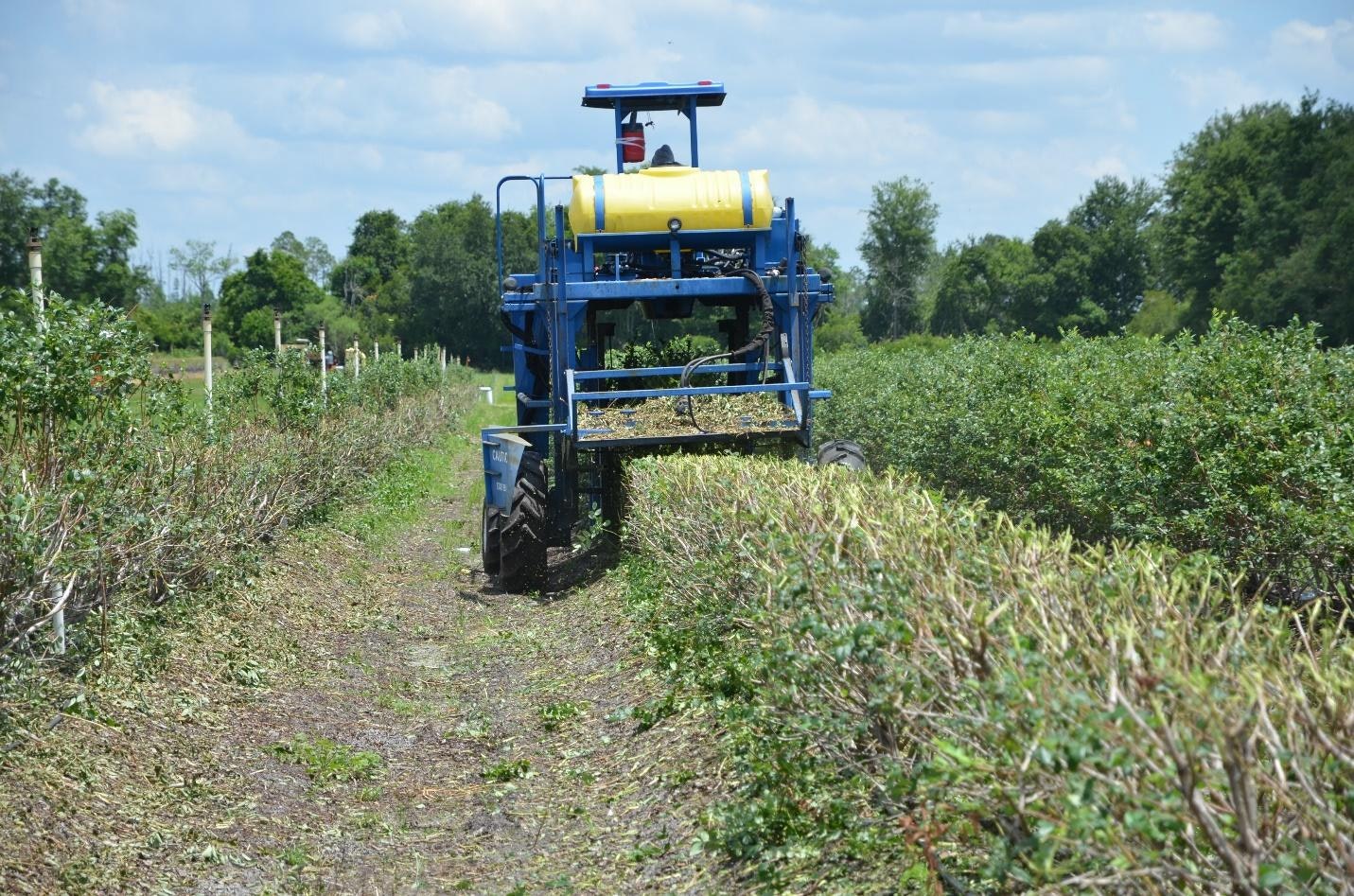

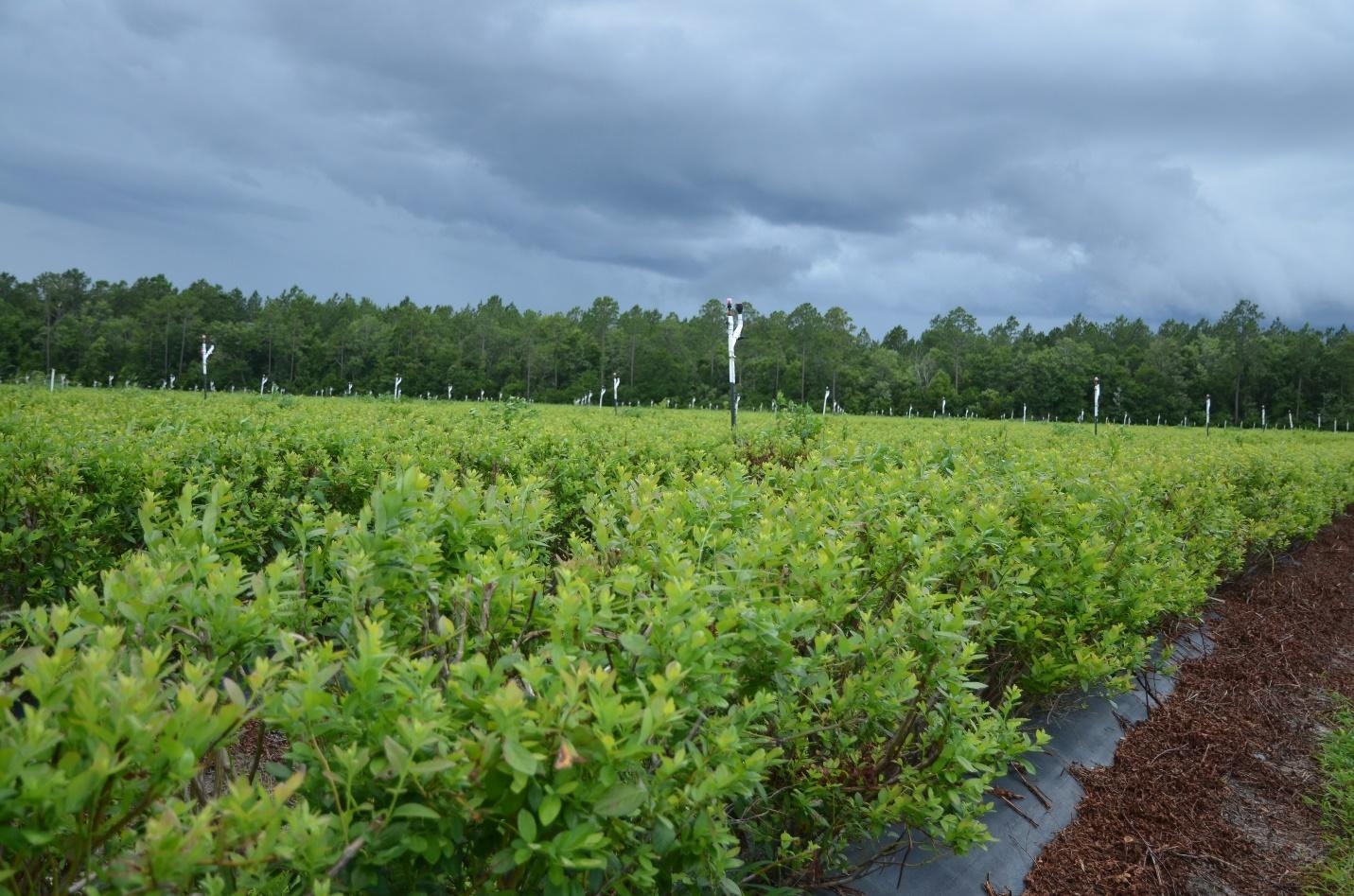

In summary, the majority of blueberry pruning in Florida is done soon after the completion of harvest to help stimulate strong summer growth. The major goals are to maintain healthy plants of optimal size, shape, and vigor, that is consistent with other cultural practices such as spraying and harvesting, and to promote optimal yields of high-quality fruit. For more information on pruning blueberries in Florida, refer to Pruning Southern Highbush Blueberry in Floridahttps://edis.ifas.ufl.edu/publication/HS1359.

CREDITS: JEFF WILLIAMSON, Professor, Horticultural Sciences Department, UF/IFAS,
& DOUG PHILLIPS, Blueberry Extension Coordinator, Horticultural Sciences Department, UF/IFAS
